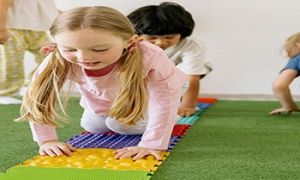The following lists the sub-outcomes, examples of evidence when children achieve each sub-outcome and how educators can promote and help children to achieve EYLF Outcome 3 - Children Have A Strong Sense Of Wellbeing V2.0.
Resilience and well-being are linked, giving children the ability to handle stress and obstacles on a daily basis. Executive function, which is a higher-order cognitive activity in the brain, includes managing emotions, learning self-regulation, and fostering tenacity and persistence.
Well-being and self-confidence depend on learning about healthy lifestyles, which include proper diet, rest and sleep, personal hygiene, physical fitness, emotions, safe and healthy digital technology use, and social interactions.
Children's capacity for concentration, teamwork and learning are all influenced by their physical well-being. Children who are more self-reliant can take more responsibility for their personal care, cleanliness, and health as well as become more aware of their own safety and the safety of others.
Learning Outcome 3 - Children Have A Strong Sense Of Wellbeing
Children become strong in their social, emotional and mental wellbeing
This is evident when children, for example:
- demonstrate trust and confidence in their interactions with others
- remain accessible to others at times of distress, confusion and frustration
- identify and seek out trusted people to communicate what upsets them, makes them uncomfortable or sad
- communicate their physical and emotional needs, e.g., hunger or thirst
- share humour, happiness and feelings of satisfaction
- seek out and accept new challenges, make new discoveries, and celebrate their own efforts and achievements and those of others
- increasingly cooperate and work collaboratively with others
- enjoy moments of solitude
- recognise their individual efforts and achievement
- make choices, accept challenges, take considered risks, manage change and cope with frustrations and the unexpected
- show an increasing capacity to understand, selfregulate and manage their emotions
- appreciate the feelings and needs of others
- experience and share personal successes in learning and initiate opportunities for new learning
- acknowledge and accept affirmation of themselves by others
- assert their capabilities and independence while demonstrating increasing awareness of the needs and rights of others
- recognise the contributions they make to shared projects and experiences
- share humour and laughter with others
- initiate approaches and actions to interact with other children and form friendships
- use positive self-talk when encountering difficulties or setbacks
- recognise a range of emotions in themselves and others.
Educators promote this learning for all children when they, for example:
- show genuine affection, understanding and respect for all children
- are aware and available to provide comfort for children in distress
- support breastfeeding and respond to children’s cues for hunger and satiety or sense of fullness after eating
- listen and respond empathically when children communicate their distress, fears or frustrations
- collaborate with children to document their achievements and share their successes with their families
- ensure that all children experience pride in their attempts and achievements
- promote children’s sense of belonging, connectedness and wellbeing
- challenge and support children to engage in and persevere at tasks and play
- model positive self-talk to support self-regulation during times of stress
- build upon and extend children’s ideas
- maintain high expectations of each child’s capabilities
- value children’s personal decision-making
- welcome children and families sharing aspects of their culture and spiritual lives to create culturally safe environments
- support families’ diverse parenting approaches
- talk with children about their emotions and responses to events with a view to supporting their understanding of emotional regulation and self-control
- acknowledge and affirm children’s efforts and growth
- assist children to develop strategies to foster positive mental wellbeing
- investigate how physical movement, exercise and healthy lifestyles assist children with mental wellbeing
- discuss unsafe situations that would need to be reported to educators and other adults, including signs of children at risk
- promote body safety awareness with children and families
- help children talk about negative emotions or potentially unsafe behaviours
- discuss and model appropriate use of digital technologies and discuss how to keep children safe online with children and families
- update their own learning of digital and cyber safety for children
- are playful and promote a sense of enjoyment
- mediate and assist children to negotiate their rights in relation to the rights of others
- create spaces for children to rest and engage in relaxation in indoor and outdoor spaces
- support the development of friendships and engaging with peers.
Children become strong in their physical learning and mental wellbeing
This is evident when children, for example:
- engage in increasingly complex coordination of body movements with sight, sounds and other sensory stimuli to engage with people and explore materials
- develop movement patterns, mobility and gross motor skills to manage and explore the physical environment
- combine gross and fine motor movement and balance to achieve increasingly complex patterns of activity, including dance, creative movement, drama and fundamental movement skills
- build core strength, physical coordination and stamina
- use their sensory perceptions, physical capabilities and dispositions with increasing integration, skill and purpose to explore and respond to their world, including finding new challenges and risks
- demonstrate spatial awareness and orient themselves, moving around and through indoor and outdoor environments confidently and safely
- manipulate equipment and manage tools with increasing competence and skill
- respond through movement to traditional and contemporary music, dance and storytelling
- move to the tempo and rhythm of the music
- participate in physical play, dance, drama
- negotiate play spaces to ensure the safety and wellbeing of themselves and others.
Educators promote this learning for all children when they, for example:
- plan for and participate in energetic physical activity with children, including dance, drama, fundamental movement skills and games
- draw on diverse family and community experiences and expertise to include familiar games and physical activities in play
- use physically active play and games as opportunities for children to develop friendships and turn-taking skills
- provide well-planned and challenging outdoor environments that encourage risk-taking and risky play experiences
- are aware of and address personal preferences that may unintentionally impact best practices for promoting children’s physical activity and movement skills
- provide a wide range of tools and materials to resource children’s fine and gross motor skills
- provide ample opportunities and resources for gross motor and movement experiences in both indoor and outdoor learning environments
- provide an environment with challenges for the abilities of children
- explore ways of incorporating knowledge of how bodies function and personal safety
- use the dramatic arts and role-play for supporting children’s exploration of feelings and opinions.
Children are aware of and develop strategies to support their own mental and physical health and personal safety
This is evident when children, for example:
- recognise and communicate their body needs, (e.g. thirst, hunger, rest, comfort, physical activity)
- are happy, healthy, safe and connected to others
- show awareness of healthy lifestyles and good nutrition
- show increasing independence and competence in personal hygiene
- show care and safety for themselves and others
- build strategies to calm the body and mind
- have agency and exercise choice about their sleep, rest and relaxation
- develop a sense of body autonomy and boundaries (e.g. my body belongs to me)
- learn ways to ask for and provide consent during everyday play
- distinguish safe and unsafe touches
- notice and label feelings/emotions in themselves and others
- learn how to tell or communicate to a trusted adult about things that upset them, make them uncomfortable or sad.
Educators promote this learning for all children when they, for example:
- actively support children to learn hygiene practices
- promote continuity of children’s personal health and hygiene by sharing ownership of routines and schedules with children, families and the community
- discuss health and safety issues with children and involve them in developing guidelines to keep the environment safe for all
- encourage and teach children about personal safety including strategies to support children’s and families’ awareness of boundaries
- engage children in experiences, conversations and routines that promote healthy lifestyles and good nutrition
- create a safe environment for Aboriginal and Torres Strait Islander children to share their history and culture, songs, language, food, ceremonies and dance, if they choose
- consider the pace of the day within the context of the community
- learn about e-safety for children and embed and model safe digital practices
- discuss aspects of posture, and other health-related age-appropriate digital practices with children
- provide a range of active and restful experiences throughout the day and support children to make appropriate decisions regarding participation
- provide ongoing opportunities for children to express their ideas, feelings and emotions through the creative arts
- encourage all children to share their history and culture, which could include songs, language, food, ceremonies and dance
- create culturally safe and appropriate learning experiences and spaces (e.g. reflect children’s cultures in the setting)
- design indoor and outdoor spaces of calm to support self-soothing
- talk with children about the benefits of sleep, rest and relaxation for the mind and body
- use flexible approaches to sleep and rest, engaging children in decision-making about their own sleep and rest
- assist children with the understanding that feelings can change over time
- read age-appropriate children’s picture books with body autonomy and boundary themes, and offer these to families to read with their children
- communicate to children that it is ok to say no to touch
- listen carefully and take seriously when children talk about things that bother them
- help children understand the concept of consent by modelling or demonstrating asking for and providing consent and providing opportunities for children to practice.
Further Reading
EYLF Learning Outcomes Version 2.0 - The following articles provide a list of the 5 EYLF Learning Outcomes and their sub-outcomes (Version 2.0).
EYLF Outcome 1 - Child Have A Strong Sense Of Identity V2.0 - The following lists the sub outcomes, examples of evidence when children can achieve each sub outcome and how educators can promote and help children to achieve EYLF Learning Outcome 1: Children Have A Strong Sense Of Identity V2.0.
EYLF Outcome 2 - Children Are Connected With And Contribute To Their World V2.0 - The following lists the sub-outcomes, examples of evidence when children achieve each sub-outcome and how educators can promote and help children to achieve EYLF Outcome 2 - Children Are Connected With And Contribute To Their World V2.0.
EYLF Outcome 4 - Children Are Confident And Involved Learners - The following lists the sub-outcomes, examples of evidence when children achieve each sub-outcome and how educators can promote and help children to achieve EYLF Outcome 4 - Children Are Confident And Involved Learners V2.0.
EYLF Outcome 5 - Children Are Effective Communicators V2.0 - The following lists the sub-outcomes, examples of evidence when children achieve each sub-outcome and how educators can promote and help children to achieve EYLF Outcome 5 - Children Are Effective Communicators V2.0.


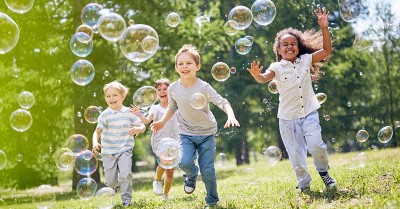
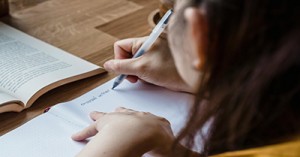
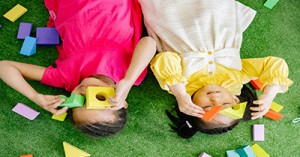
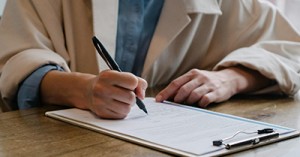
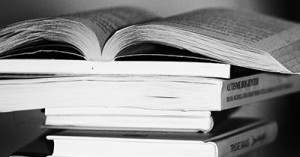
 Here is the list of the EYLF Learning Outcomes that you can use as a guide or reference for your documentation and planning. The EYLF
Here is the list of the EYLF Learning Outcomes that you can use as a guide or reference for your documentation and planning. The EYLF The EYLF is a guide which consists of Principles, Practices and 5 main Learning Outcomes along with each of their sub outcomes, based on identity,
The EYLF is a guide which consists of Principles, Practices and 5 main Learning Outcomes along with each of their sub outcomes, based on identity, This is a guide on How to Write a Learning Story. It provides information on What Is A Learning Story, Writing A Learning Story, Sample
This is a guide on How to Write a Learning Story. It provides information on What Is A Learning Story, Writing A Learning Story, Sample One of the most important types of documentation methods that educators needs to be familiar with are “observations”. Observations are crucial for all early childhood
One of the most important types of documentation methods that educators needs to be familiar with are “observations”. Observations are crucial for all early childhood To support children achieve learning outcomes from the EYLF Framework, the following list gives educators examples of how to promote children's learning in each individual
To support children achieve learning outcomes from the EYLF Framework, the following list gives educators examples of how to promote children's learning in each individual Reflective practice is learning from everyday situations and issues and concerns that arise which form part of our daily routine while working in an early
Reflective practice is learning from everyday situations and issues and concerns that arise which form part of our daily routine while working in an early Within Australia, Programming and Planning is reflected and supported by the Early Years Learning Framework. Educators within early childhood settings, use the EYLF to guide
Within Australia, Programming and Planning is reflected and supported by the Early Years Learning Framework. Educators within early childhood settings, use the EYLF to guide When observing children, it's important that we use a range of different observation methods from running records, learning stories to photographs and work samples. Using
When observing children, it's important that we use a range of different observation methods from running records, learning stories to photographs and work samples. Using This is a guide for educators on what to observe under each sub learning outcome from the EYLF Framework, when a child is engaged in
This is a guide for educators on what to observe under each sub learning outcome from the EYLF Framework, when a child is engaged in The Early Years Learning Framework describes the curriculum as “all the interactions, experiences, activities, routines and events, planned and unplanned, that occur in an environment
The Early Years Learning Framework describes the curriculum as “all the interactions, experiences, activities, routines and events, planned and unplanned, that occur in an environment

